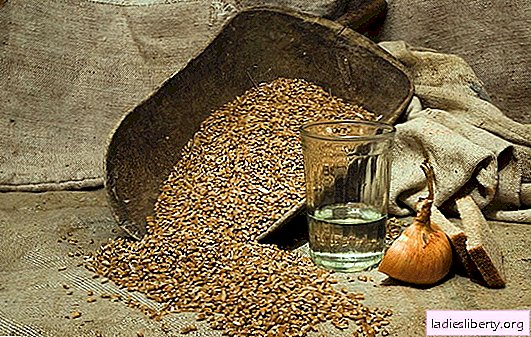
Over the years, the use of fluoride in water and toothpaste has been very controversial. Some people claim that fluoride can cause serious health problems, while experts have found that fluoride can significantly improve dental health.
So what's the truth?
What is fluoride?
Remember the periodic table, fluorine is in it under the 9th atomic number. Fluorine (from Greek fluoros “destruction”) is the most active non-metal and a very strong oxidizing agent. In simple form and under normal conditions, fluorine is a diatomic gas (F2).
In the form of pure gas, it is the most reactive and electronegative for all elements. It has an extremely destructive effect on any living organism with which it is in contact.
It is found naturally in the whole Earth, in soil, food, water and minerals. It can also be made in laboratories for adding to water and dental care products such as toothpaste.
More fluorine is usually added to water, in the central water supply, to reduce caries in consumers.
Essence of the question
In nature, calcium fluoride (CaF2) is found in soil and water. Spring water in areas without industrial plants that regularly use fluorine usually contains approximately 0.01-0.03 mg / L calcium fluoride, while sea water is closer to 1.3 mg / L. These quantities vary greatly by location.
Despite the urgent need for various organizations to inform the public what compounds and reagents are added to their tap water, this is not done. Calcium fluoride does not accumulate well in the body, while sodium fluoride (NaF) is just fine. This chemical composition not found in nature was considered an industrial toxic waste until 1950, when it was announced as a new dental hygiene initiative.
However, the fluorine used in tap water is not calcium fluoride, but sodium fluoride. Moreover, now, in 90% of our fluorinated water, it is a compound known as hydrofluoric acid (H2SiF6). It is a by-product of the process used to create phosphate fertilizers that used to be considered toxic waste, and now (more than likely) is your family’s water supplement.
What is good fluoride for teeth?
Studies have shown that adding fluoride to water reduced tooth decay by 20–40%. This is a huge positive effect. In fact, the Centers for Disease Control and Prevention stated that adding fluoride to water is one of the ten great public health achievements of the 20th century.
So why is fluoride so good for your teeth? When you consume fluoride, it is collected in areas that are high in calcium, including your teeth.
This helps teeth in several ways:
When children with developing teeth eat or drink fluoride in safe quantities, it accumulates inside their teeth. This provides teeth with strength and protection against acids.
· Fluoride can also enhance tooth enamel in adults. When you eat or drink fluoride, it becomes part of your saliva. Since your saliva constantly surrounds your teeth, it covers the surface of your teeth and fluorine, thereby enhancing enamel and preventing tooth decay.
· Fluoride in toothpaste and mouthwash helps make the surface of your teeth more resistant to decomposition.
· Your saliva, in order to preserve your enamel, constantly replenishes your teeth with minerals such as calcium and phosphorus. When there is fluoride in your saliva, it, along with other minerals, works most efficiently, making your teeth as strong and protected as possible.
· As long as you have healthy teeth and a low risk of tooth decay, drinking (tap) water containing a safe amount of fluoride and regular brushing of your teeth with fluoride paste can provide you with a sufficient amount of fluoride.
Nuance! Eating fluoride in large quantities can be harmful to the body. To achieve the best effect, use a toothpaste containing fluoride. A lack of fluoride in the body and water provokes tooth decay.
How to get fluoride?
There are many ways you can get fluoride to keep your teeth healthy. Just follow the instructions and use the correct dose. Here are some common sources of fluoride:
· Toothpaste;
· Mouthwash;
· Water;
· Dietary supplements containing fluoride;
· Nutrition;
· The drinks;
· Professional foams, gels and varnishes.
It is important that there is enough fluoride in the body to keep the teeth healthy.
Can fluoride be harmful to teeth?
If fluoride is so good for teeth, why is everything so contradictory? Some people think that fluoride can cause serious health problems, including cancer, kidney failure, or bone disease. It is true that too much fluoride can cause problems. But as long as it is used properly, it is safe and effective. In fact, for many generations, millions of people have been drinking natural fluoride in higher concentrations than those currently recommended.
Since fluoride in toothpastes and mouthwashes does not get inside, a real fear in people appears when it is found in water, other drinks and food. It is noted that 60 years of experience and practical experience have given people sufficient evidence that fluoride in centralized water supply is safe and effective. There is no convincing evidence of a link between fluoride in water and cancer. However, it would not be out of place to conduct additional studies to clarify the relationship.
As long as you use fluoride in the right dosage, it will provide safe and effective protection against tooth decay. Never swallow toothpaste, mouthwash, or other dental products that have warning labels on their ingestion. And young children should be looked after to prevent excessive swallowing of foam or toothpaste.
The minimum risk level for chronic exposure to fluoride is at a concentration of 0.05 mg / kg / day.
If you or your child receive fluoride supplements, you should only take the amount prescribed to prevent overdose. An excess of fluoride in the body and water provokes fluorosis. This is the only known cosmetic problem that arises from too much fluoride in water or from other sources.
If you are concerned about the presence or quantity of fluoride in the tap water, contact your local water utility and ask them about the fluoridation of the water. In most cases, fluoridation is not carried out, as this is a fairly financially expensive process.
Everything is good in moderation. And the answer to the question of the usefulness of fluorine clearly demonstrates this. However, fluorine, obtained as a by-product of mining, continues to be used to treat tap water or as a component in dental products, since its positive aspects are believed to outweigh the negatives.











